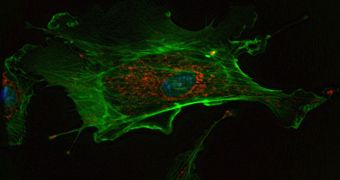In a groundbreaking new study, scientists were able to observe the formation of microtubules inside living plant cells for the first time. The finding may have significant implications for agriculture.
The formation of microtubules is a fundamental process of cellular biology, and one that has not been readily observed as it was happening before.
In charge of the new study were researchers from the Carnegie Institution for Science, who worked closely colleagues based at the Nara Institute of Science and Technology.
Scientists here observed the process by looking at the recruitment and activity patterns of individual protein complexes inside the plant cells.
These protein complexes were in charge of creating the cellular protein network known as the microtubule cytoskeleton, which essentially forms the base of the structure.
These formations serve as support structures inside the cells, and they can be involved in diverse processes, such as mitosis, cytokinesis, and vesicular transport.
They generally have a length ranging from 200 nanometers to 25 micrometers, and a diameter of around 25 nanometers. A nanometer is the billionth part of a meter.
Details of the new investigation appear in the October 10 online issue of the esteemed scientific journal Nature Cell Biology, Science Blog reports.
“As far as we are aware, this research is the first to witness the dynamics of individual gamma tubulin complex processes, which are fundamental to every plant and animal,” says expert David Ehrhardt.
The scientist holds an appointment at the Carnegie Department of Plant Biology, and is also a coauthor of the new Nature paper.
“We look at our plant system as a model for non-centrosomal array organization, which also occurs in many important differentiated animal cells,” he adds.
A centrosome is a centralized body that is responsible for creating microtubules. In animals, structures known as centrioles are used by the cell to organize microtubules in specific types of networks.
Centrioles are cellular structures responsible for the organization of the mitotic spindle and the completion of cytokinesis.
But plants do not feature centrioles, and the new research revolved around finding out how they organized their microtubules ahead of cellular division.
“While we anticipate that some of the molecular players may be different, many of the principles may be similar,” Ehrhardt says.
“What we learn here could help us understand basic mechanisms underlying crop plant growth and development, and could have implications for understanding the process of acquiring cell shape and function of human cells,” he concludes.

 14 DAY TRIAL //
14 DAY TRIAL //